8 October, 2018
Single chain rings, made for Enduro
Single chainrings have been around ever since the first modern bike. That's right, John Kemp Starley was one of the fathers of modern bicycles as we know them today, with their two wheels of the same size and rear-wheel drive via a chain. He came up with the Rover Safety Bike, back around 1886. To put it another way, a little more than 40 years after the founding of Orbea.
Back then, it also included one of the first single chainrings: the singlespeed. A single chainring and a single cog. It was a gear ratio practically unimaginable for a discipline like enduro. Fast forward to modern times and the single chainring as we know it today.
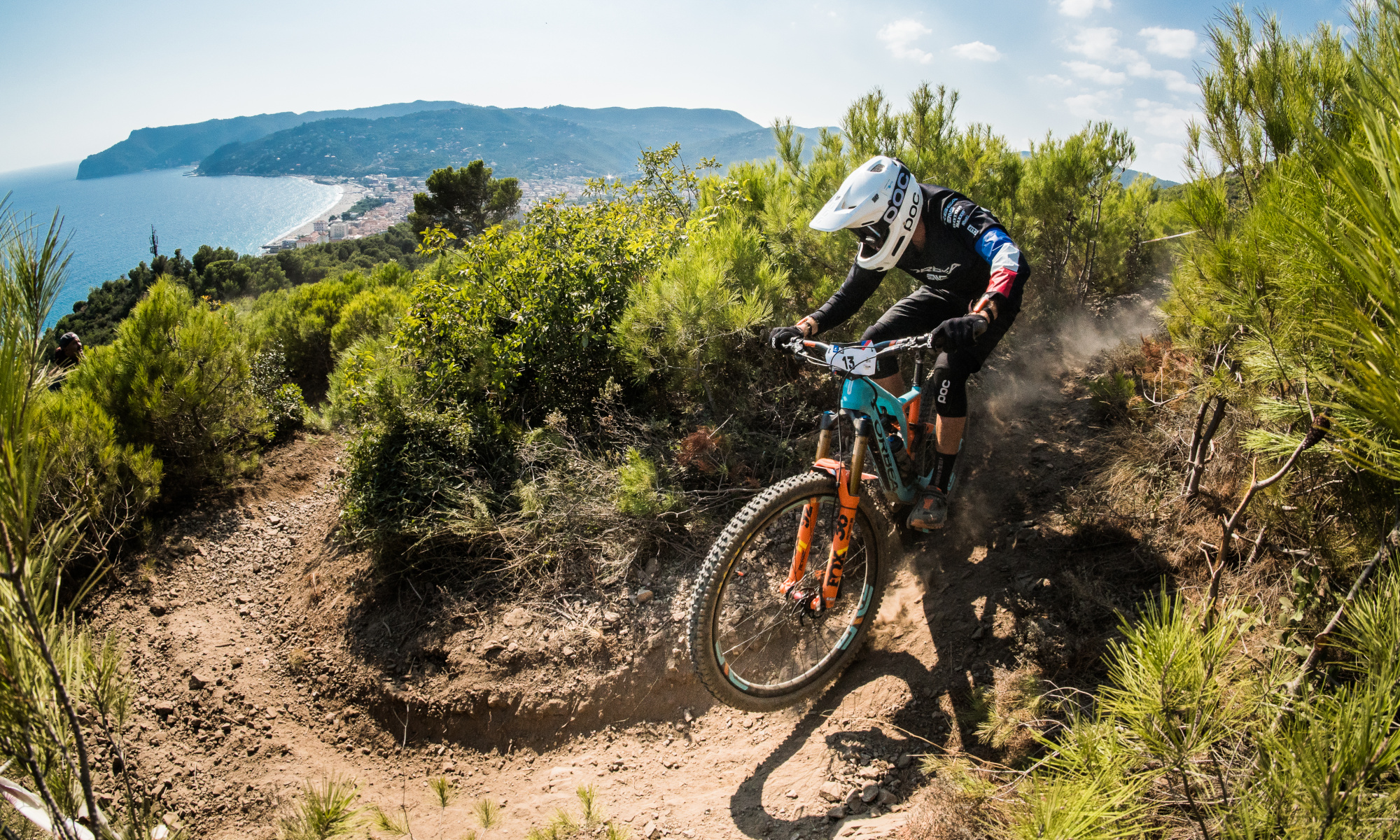
In 2012 the world was introduced to the first single chainring drive train for MTB, which really shook up the sector, after another big change in recent years, the wheels. Since it was introduced, the single chainring has been gaining ground over the previous two- and three-chainring drive trains in all MTB categories, including enduro.
While single vs. double chainrings were debated long and hard in the early years of the Enduro World Series, the most important enduro competition in the world, today it seems this has all been settled. The single chainring is used by almost all competitors, and there are a few reasons why.
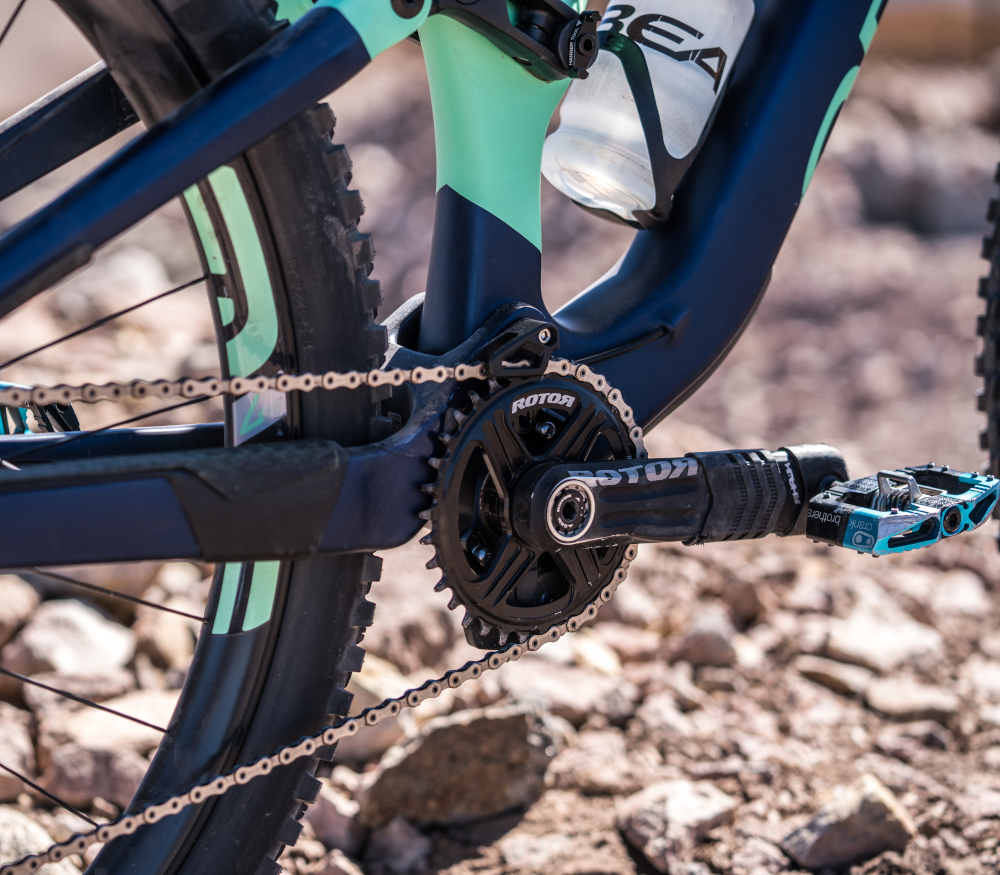 |
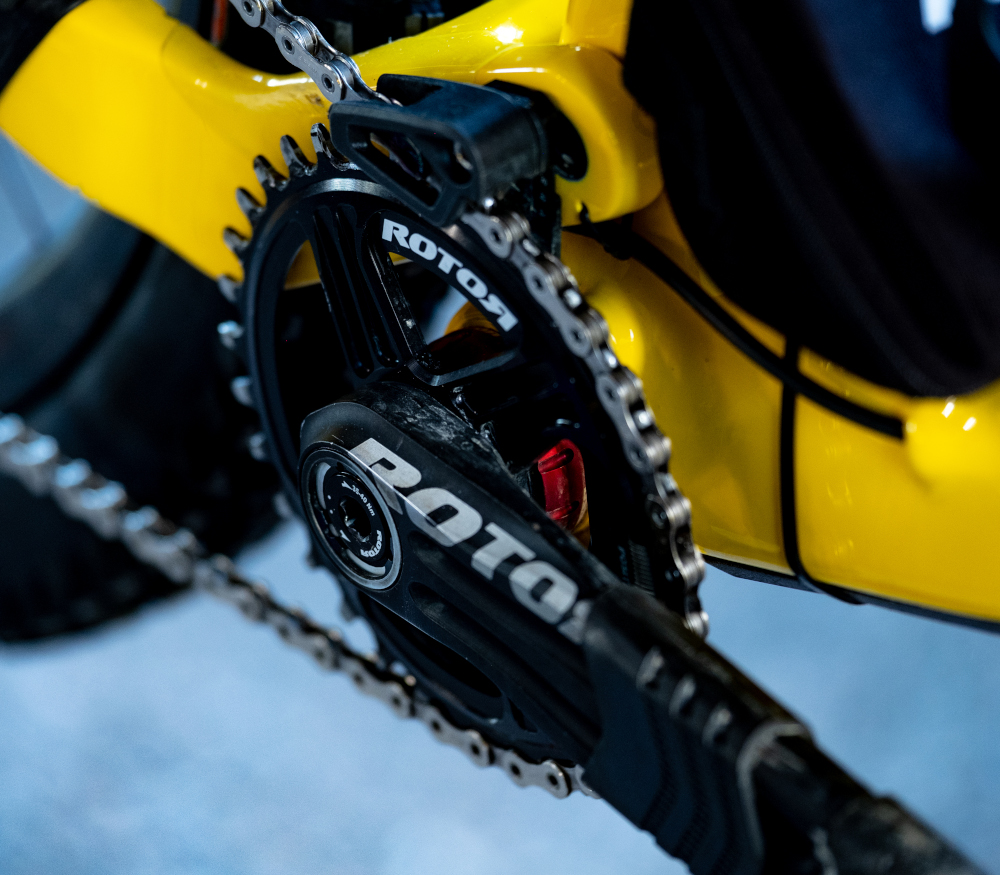 |
To start with, mounting a single chainring on the Rallon ridden by the Orbea Enduro Team (ROTOR Q Rings® or round) means not having to worry about mechanical problems like slack chains or chains falling off, which is really valuable for any participant in a race. This is especially true on terrains like Whistler, with a lot of jumps and roots, Olargues, with its rocky terrain or where a single chainring makes the most difference, in the sticky mud of Colombia.
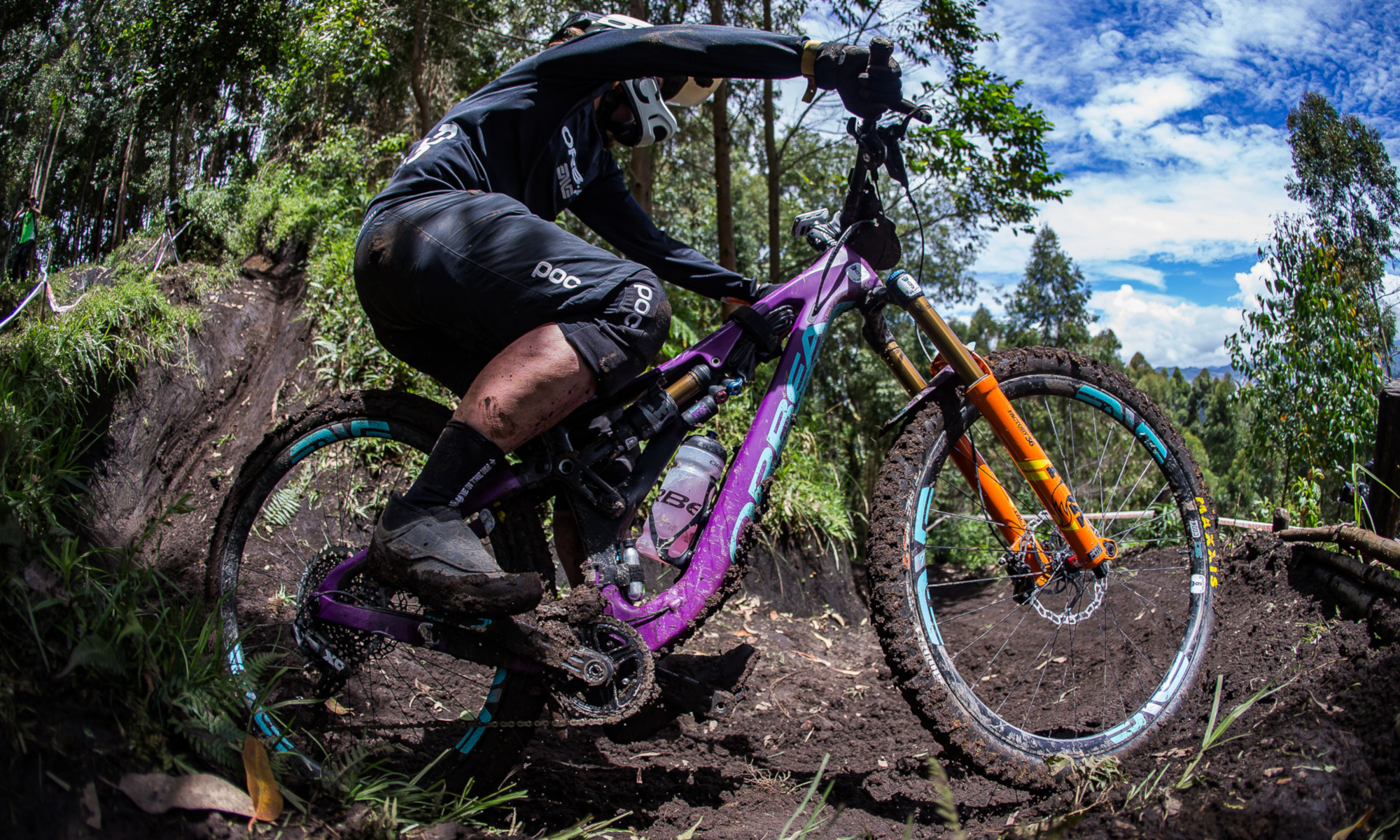
The iconic Finale Ligure, for example, offers forest trails and sections with extremely sharp limestone rocks. This is especially true in the second of the four timed stages. It’s called Rocche Gianche and there are nearly two kilometers of sharp rocks that cause the chain to wildly move around.
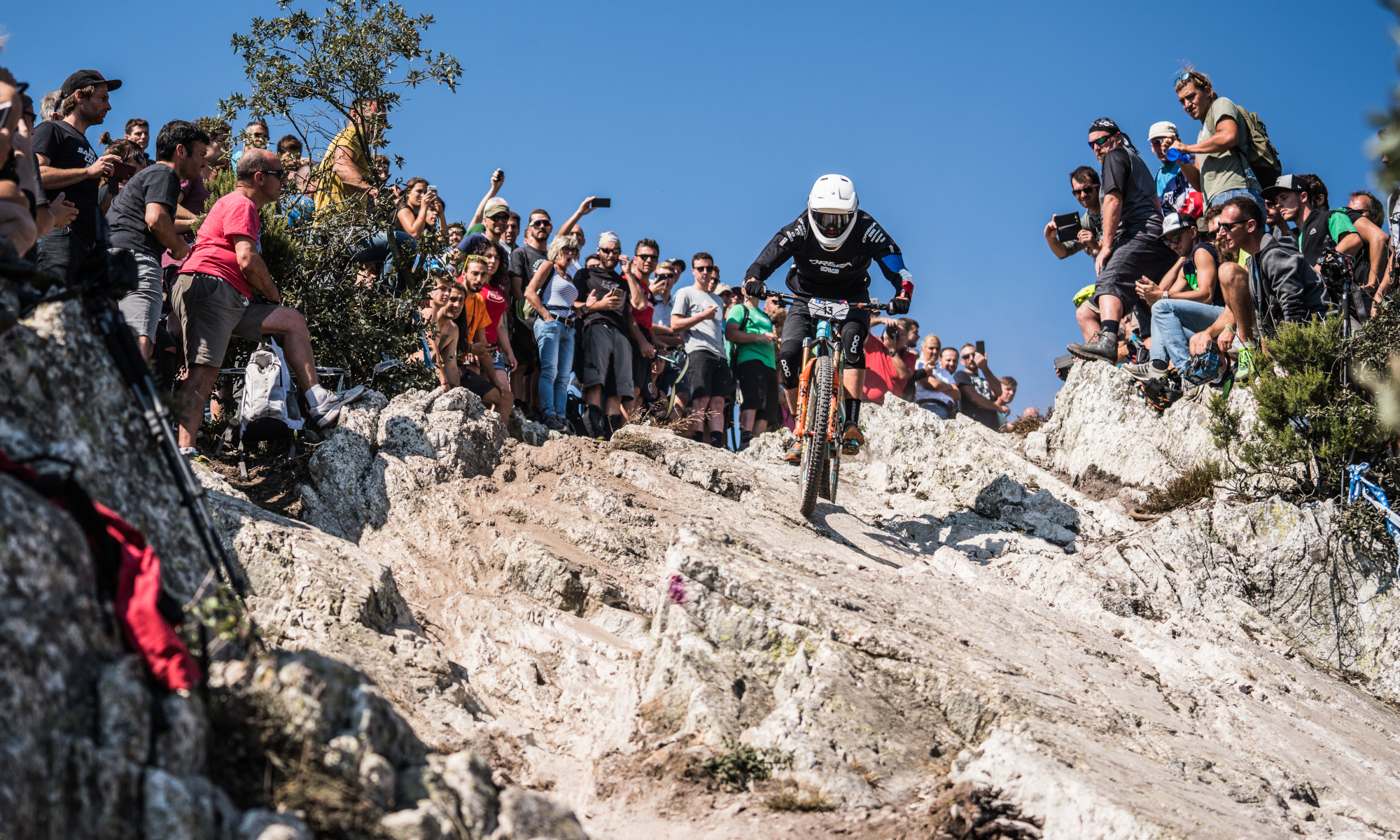
Luckily, the single chainring drive trains have a shorter chain than two- and three-chainring bikes, which means greater tension. Together with the width and tight teeth on the chainwheel, this practically eliminates any possibility of the chain falling off. What’s more, it is complemented with a chainguard, which is practically essential for a discipline like enduro.
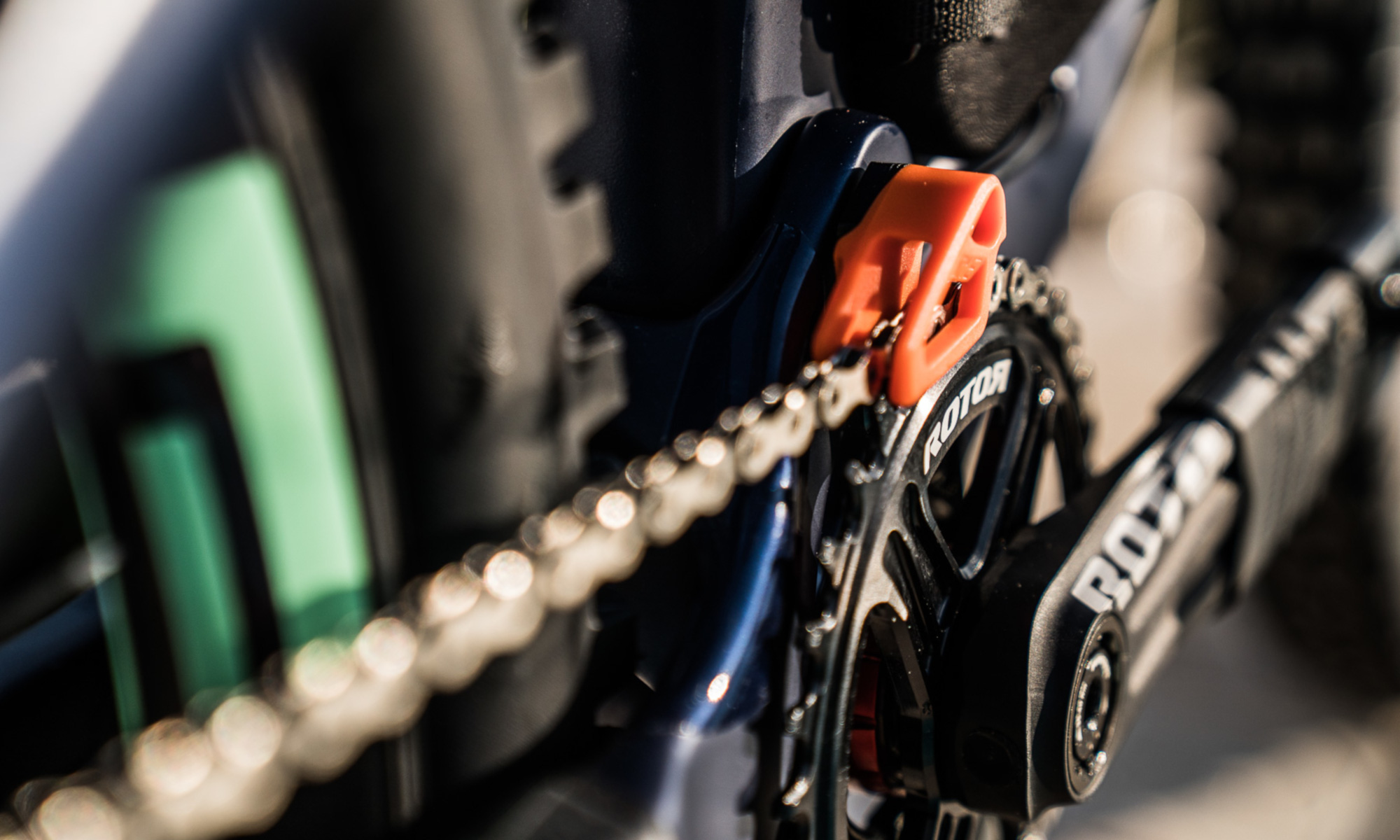
The chainring that is mounted and the combination with the gear bracket is less important for EWS riders because the classification in these races is determined by the time it takes the rider to complete the special segments, and it’s always downhill.
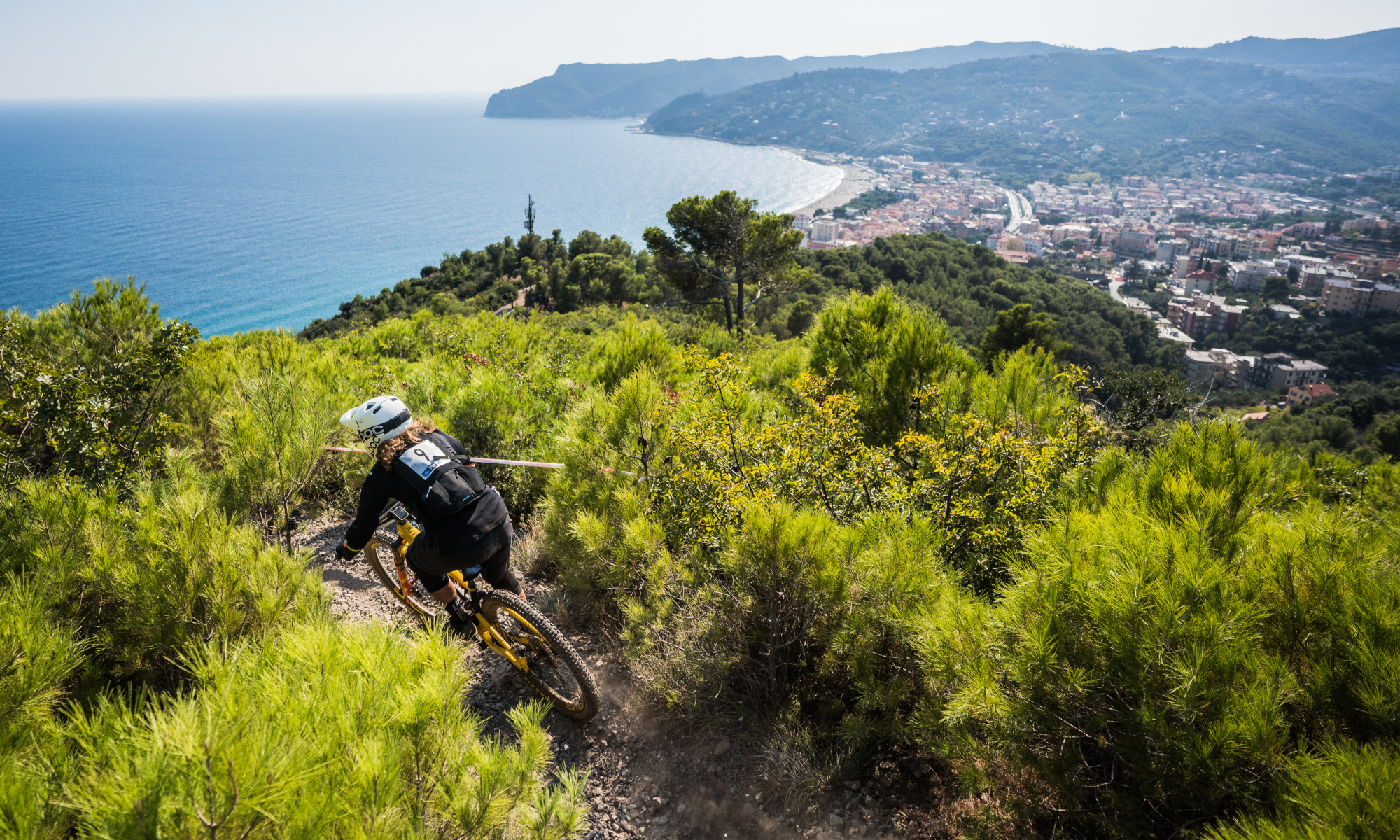
As a result, most riders choose a large chainring, either a 30 or a 40. They prefer faster speeds downhill, while sacrificing gear changes on uphill climbs or links, since the overall time to complete these races (links + special sections) is fairly generous. Unless they are very, very strong, not many dare to mount a 38 or 40. At the end, they are going to have a 10 km descent at full speed, but there is also 30 km of pedaling between the links in the case of Finale Ligure.
And if the ramp is tough, they can always put their foot on the ground and push the bike. It’s also the perfect time to enjoy the atmosphere experienced at these events. On normal enduro routes, it would be important to choose the chainwheel according to the terrain along the route. ROTOR offers numerous chainwheel sizes, from 26 to 34, to combine with any cassette, regardless of whether it is 9-48, 10-51 or 10-5.
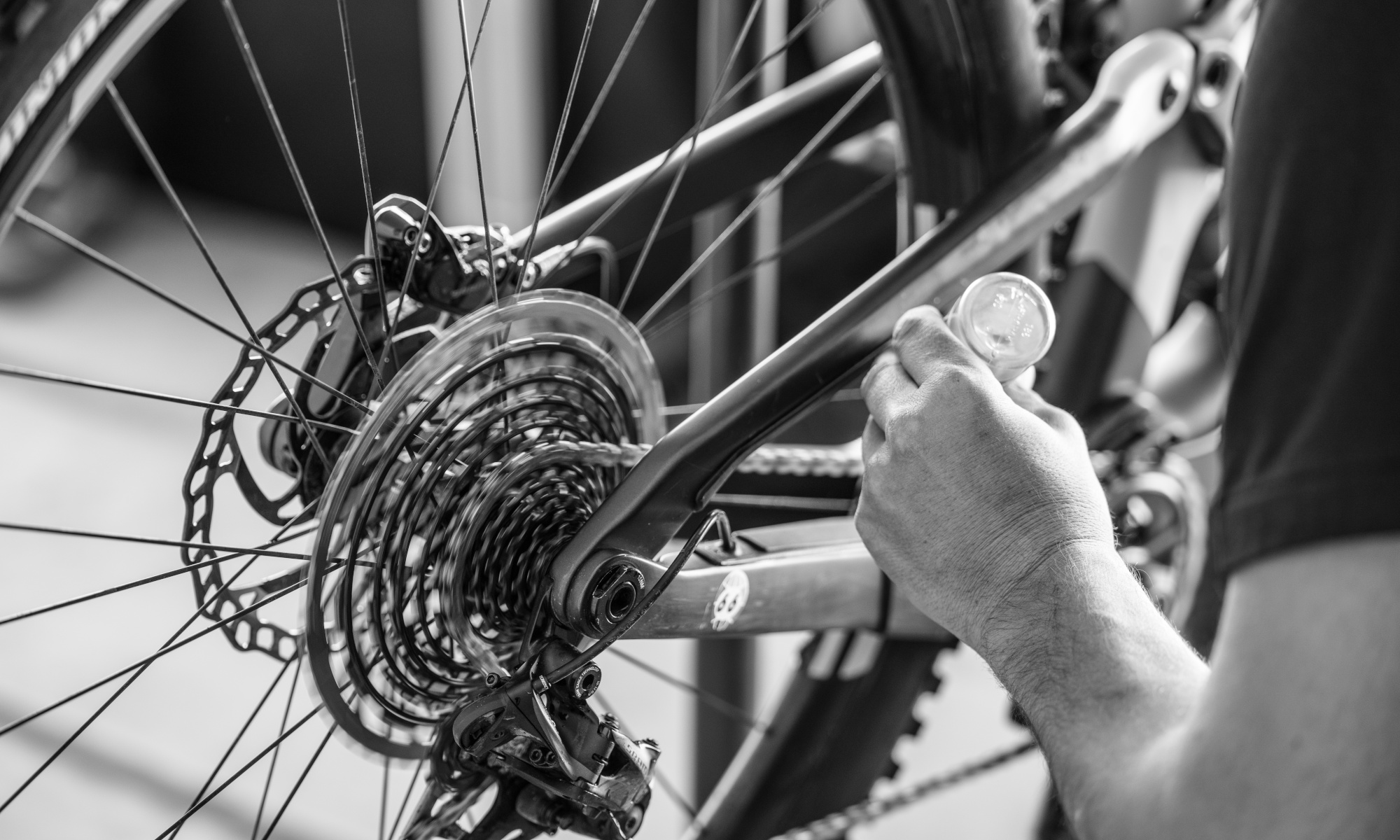
It’s true that riders have many different reasons for using single chainrings: the ergonomics of a single chainwheel, which is beneficial on our routes, since they don’t have to think about what chainring or cog to use, the ease of daily maintenance (adjusting only one derailleur), smoother gear changes, since the chainring is more centered on the cassette and the weight.
This last aspect is maybe less important than in other disciplines, but after two hours of pedaling between the links of the EWS, you notice the weight, just like on enduro routes lasting several hours in the mountains. This is even truer when we consider the 500 g (this can vary, depending on the assembly) that are saved by using the single chainring: the additional weight of the chainring (about 80 g if there are two of them), the derailleur (150 g), the gear change (150 g), the housing and the cable (50 g) and a few additional grams that Orbea Enduro Team riders can save on the (non-existent) spider that fastens the chainrings to the cranks.
Direct Mount
ROTOR supplies the team with cranks and chainrings, using a chainring assembly called Direct Mount. Basically, instead of attaching the chainring to the crank via an additional part (which means more weight), this consists in attaching it directly to the bottom bracket with an Allen screw. This not only saves a few grams on the scale but, more importantly, makes it possible to change the chainwheel quickly, with nothing more than an 8-mm Allen wrench, ideal for changing the gear ratio of the single chainring quickly.
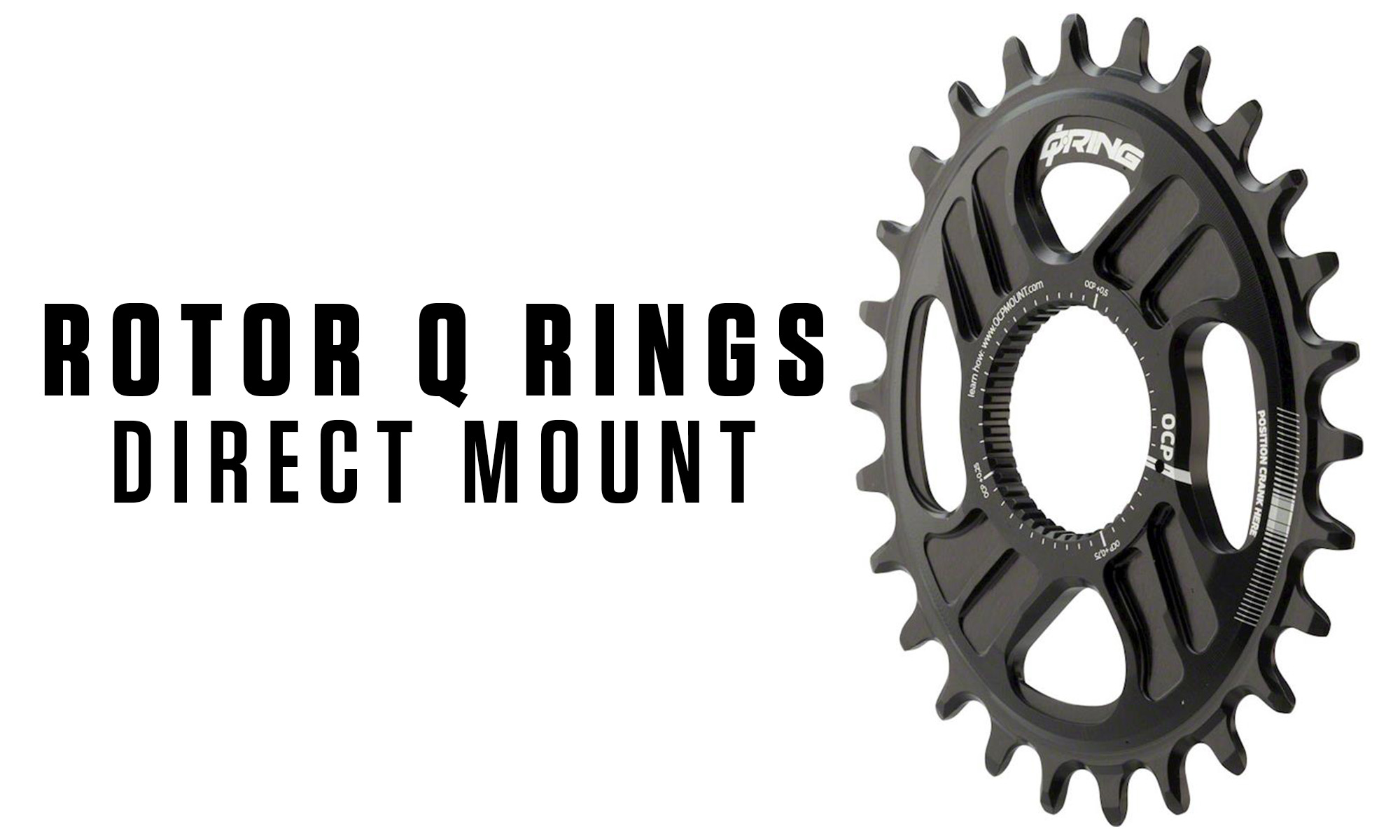
It’s true that the team riders rarely change chainwheels during the race, because they prefer to focus on other, more decisive aspects of the descent, such as the wheels and tires or the SAG. If needed, they just mention it to the mechanic when they reach the box before tackling the next section and in a few minutes they have a new chainring.
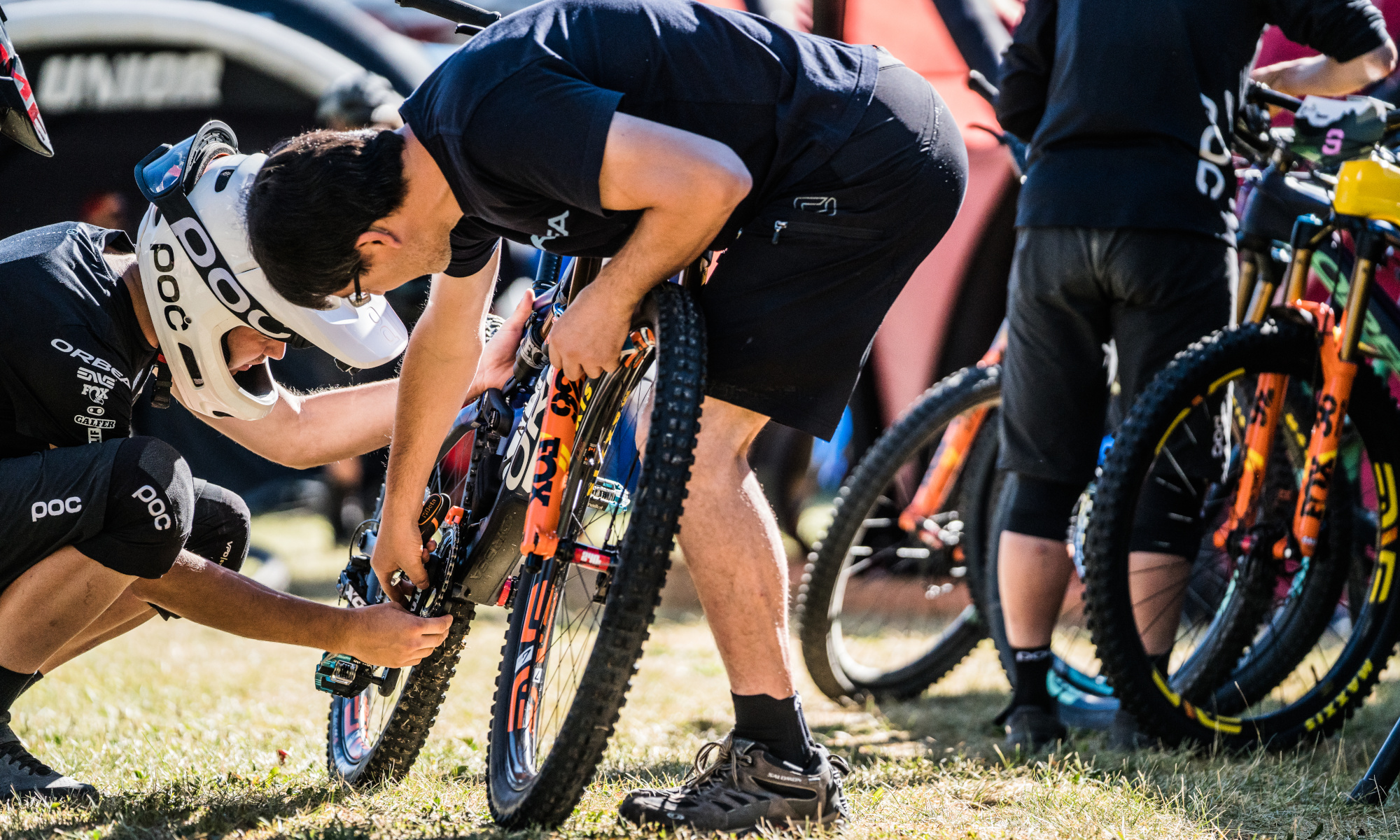
This is very useful on enduro routes, and even more so for mountain biking adventures, since you can take a chainring in your backpack and change it in the middle of the route, if need.
The perfect accessory
The R-Hawk cranks by ROTOR mounted on the team’s Rallon come with a series of sizes and adapters so they are compatible to any type of bottom bracket axle and frame; the Orbea Enduro Team uses the Boost, with BSA bottom bracket cups. In addition, the cranks are specifically intended for aggressive use.
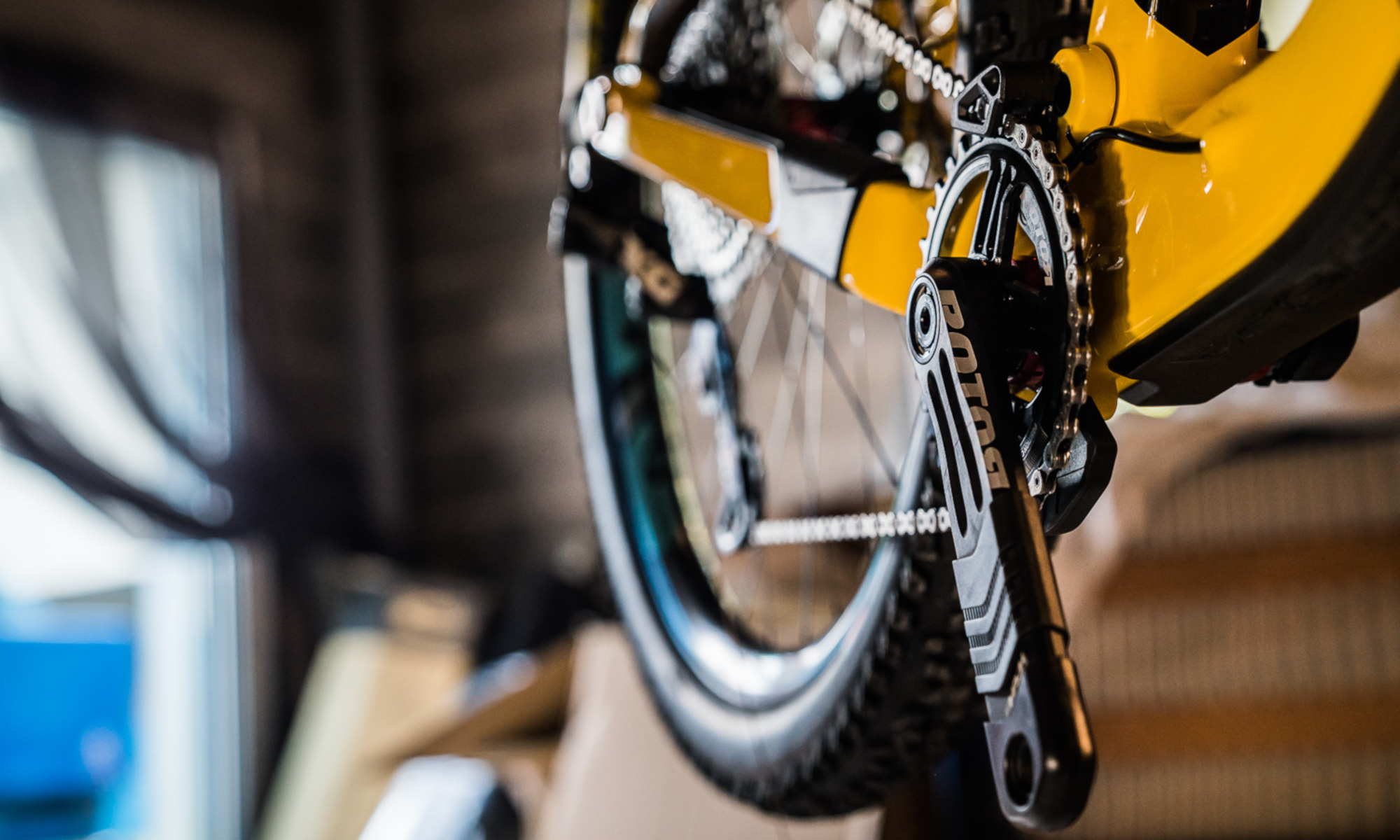
Su gran eje de 30mm aporta más rigidez al pedalear en comparación con otros ejes más pequeños como el Hollowtech II de Shimano (24mm de eje) o el Sram DUB (28,9mm), lo que hace que se desperdicie menos energía al pedalear. Además, su sistema de anclaje de platos es Direct Mount y podríamos decir que casi se tratan de unas bielas MyO, ya que incluyen unos protectores de goma disponibles en siete colores que además de complementar el plano estético, son realmente funcionales.
Its large 30-mm axle provides greater rigidity when pedaling as compared to other shorter cranksets, such as the Hollowtech II from Shimano (with a 24-mm crankarm) or the Sram DUB (28.9 mm), which means less energy goes to waste when pedaling. It also uses a Direct Mount anchoring system to fasten to the chainrings and we could say that they are practically MyO cranks, since they include rubber guards that are available in seven different colors that not only add to the aesthetics of the bike, but are also extremely functional.
The cranks of a professional enduro rider undergo very harsh conditions, somewhat alleviated by these simple, but very effective guards, which prolong the service life of the cranks. The cranks work so well for the team that Gabriel Torralba, for example, also mounts them on his Oiz and Becky Cook uses them on the Alma she rides for training.
You can keep up on all the news from the Orbea Enduro Team on their social networks (Youtube, Instagram and Facebook), at orbea.com and on the Orbea Enduro Team's website.